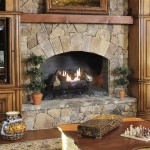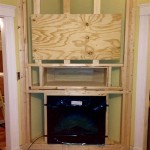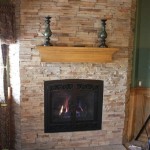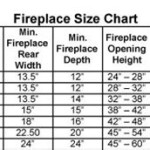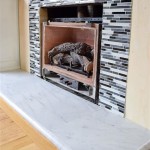Exploring Fireplace Options in St. Louis
St. Louis, with its diverse architectural styles and distinct seasons, presents unique considerations for homeowners looking to install or upgrade a fireplace. From historic brownstones to modern suburban homes, the demand for efficient and aesthetically pleasing fireplaces remains consistent. This article will explore the various fireplace options available to St. Louis residents, highlighting key factors to consider when making a selection, and examining the benefits and drawbacks of different fuel types.
Understanding Fireplace Types: Wood-Burning, Gas, and Electric
The initial decision for any homeowner involves choosing the type of fireplace that best suits their needs and preferences. The three primary categories are wood-burning, gas, and electric. Each offers a different balance of aesthetics, functionality, and cost.
Wood-burning fireplaces are often prized for their traditional appeal and the authentic crackling sound and aroma of burning wood. However, they require a significant commitment to maintenance, including sourcing and storing firewood, regularly cleaning the chimney to prevent creosote buildup, and adhering to local burn regulations. Traditional open-hearth fireplaces are notably inefficient, with much of the heat escaping up the chimney. Modern wood-burning stoves and fireplace inserts offer improved efficiency and cleaner burns, but still necessitate responsible handling of fuel and ash.
Gas fireplaces provide a convenient alternative to wood-burning models. They can be fueled by natural gas or propane, offering a readily available and controllable heat source. Gas fireplaces are available in a variety of styles, from traditional log sets to contemporary linear designs. They are generally easier to operate than wood-burning fireplaces, requiring only the flick of a switch or the press of a button to ignite. While gas fireplaces produce less authentic flames and sounds than wood-burning models, advancements in technology have led to more realistic flame patterns and simulated ember beds. The installation of a gas line is required, which can add to the overall cost, and regular inspection and maintenance are still necessary to ensure safe and efficient operation.
Electric fireplaces offer the greatest versatility and ease of installation. They require no venting and can be plugged into a standard electrical outlet, making them suitable for apartments, condos, and other spaces where wood-burning or gas fireplaces are not feasible. Electric fireplaces utilize electric heating elements to generate warmth and feature simulated flames created by LED lights and reflective surfaces. While they do not provide the same level of heat as wood-burning or gas fireplaces, electric fireplaces can effectively warm smaller rooms and create a cozy ambiance. They are available in a wide range of styles, from freestanding units to wall-mounted models, offering homeowners flexibility in design and placement. The operating costs of electric fireplaces can vary depending on electricity rates and usage patterns.
Considering Efficiency and Safety Regulations in St. Louis
When selecting a fireplace in St. Louis, it is crucial to consider both energy efficiency and adherence to local building codes and safety regulations. Energy efficiency affects the ongoing operating costs of the fireplace, as well as its environmental impact. Safety regulations are in place to protect homeowners from fire hazards and carbon monoxide poisoning.
Efficiency is typically measured using the Annual Fuel Utilization Efficiency (AFUE) rating for gas fireplaces and stoves, and the heating efficiency for wood-burning stoves. A higher AFUE rating indicates a more efficient gas appliance. For wood-burning stoves, look for models that are EPA-certified, meaning they meet stringent emission standards and burn more cleanly. Open-hearth wood-burning fireplaces are notoriously inefficient and may be subject to restrictions or outright bans in some areas. Choosing a fireplace with a high efficiency rating can significantly reduce fuel consumption and lower heating bills.
St. Louis County and City have specific building codes related to fireplace installation and operation. These codes typically address venting requirements, clearances to combustible materials, and carbon monoxide detector requirements. Permits are usually required for the installation of new fireplaces or the modification of existing ones. It is essential to consult with a qualified fireplace installer or contractor who is familiar with local codes to ensure that the installation meets all applicable requirements. Regular inspection and maintenance of fireplaces and chimneys are also crucial for safety. This includes cleaning the chimney to remove creosote, inspecting gas lines for leaks, and checking carbon monoxide detectors to ensure they are functioning properly. Neglecting maintenance can increase the risk of fire or carbon monoxide poisoning.
Furthermore, St. Louis experiences periods of poor air quality, particularly during the winter months. To mitigate pollution, some communities may implement "no burn" days, during which the use of wood-burning fireplaces and stoves is restricted. Homeowners should be aware of these regulations and comply with them to protect public health and the environment.
Aesthetic Considerations and Fireplace Design Options
Beyond functionality and safety, the aesthetic appeal of a fireplace is a significant consideration for many homeowners. A fireplace can serve as a focal point in a room, adding warmth, character, and visual interest. St. Louis offers a diverse range of architectural styles, influencing the design choices for fireplaces.
For historic homes, maintaining the original character of the fireplace is often a priority. This may involve restoring existing fireplaces, replicating original designs, or selecting new fireplaces that complement the architectural style of the home. Common design elements in historic St. Louis homes include ornate mantels, decorative tile surrounds, and brick or stone hearths. Wood-burning fireplaces are often favored in historic homes for their traditional appeal, although gas inserts can provide a more convenient and efficient heating option without compromising the aesthetic.
Modern homes offer greater flexibility in fireplace design. Contemporary fireplaces often feature clean lines, minimalist aesthetics, and unconventional materials. Linear gas fireplaces are particularly popular in modern homes, providing a sleek and sophisticated look. Other design options include frameless fireplaces, wall-mounted fireplaces, and fireplaces with glass enclosures. Electric fireplaces also offer a wide range of design possibilities, allowing homeowners to create a custom look that complements their decor. The surround materials can range from polished concrete to stainless steel, depending on the desired aesthetic.
Regardless of the architectural style of the home, the fireplace mantel serves as a key design element. The mantel can be crafted from wood, stone, metal, or a combination of materials. It provides a space for displaying artwork, photographs, and other decorative items. The size and style of the mantel should be proportionate to the size of the fireplace and the room. In addition to the mantel, the fireplace surround and hearth also contribute to the overall aesthetic. The surround can be made from tile, brick, stone, or other materials, while the hearth provides a non-combustible surface in front of the fireplace.
Ultimately, the best fireplace design will reflect the homeowner's personal style and preferences. By carefully considering the architectural style of the home, the desired aesthetic, and the available space, homeowners can create a fireplace that is both functional and visually appealing.
In St. Louis, fireplace selection involves a complex interplay of style, efficiency, and regulatory compliance. Understanding the nuances of wood-burning, gas, and electric options is paramount. Homeowners should prioritize safety, energy efficiency, and adherence to local building codes when choosing and installing a fireplace. Finally, the aesthetic integration of the fireplace with the home's overall design is crucial for creating a comfortable and visually appealing living space.

Kitchen Granite Marble Countertops Fabrication Tile Ladue St Louis Mo

Sauce Get Cozy At Stl S Best Fireside Drinking Spots

Outdoor Fireplace Contractor St Louis Ideas

Outdoor Fireplace Contractor St Louis Ideas

Outdoor Fireplaces St Louis Select Landscaping

Outdoor Fireplace Contractor St Louis Ideas

Custom Stone Fireplace Surrounds In St Louis Arch City

Wood Gas Fireplaces St Charles Louis Mann Lumber

Fireplaces Stone Fireplace Brick J V Seibel Sons Masonry

Outdoor Fireplaces St Louis Select Landscaping


